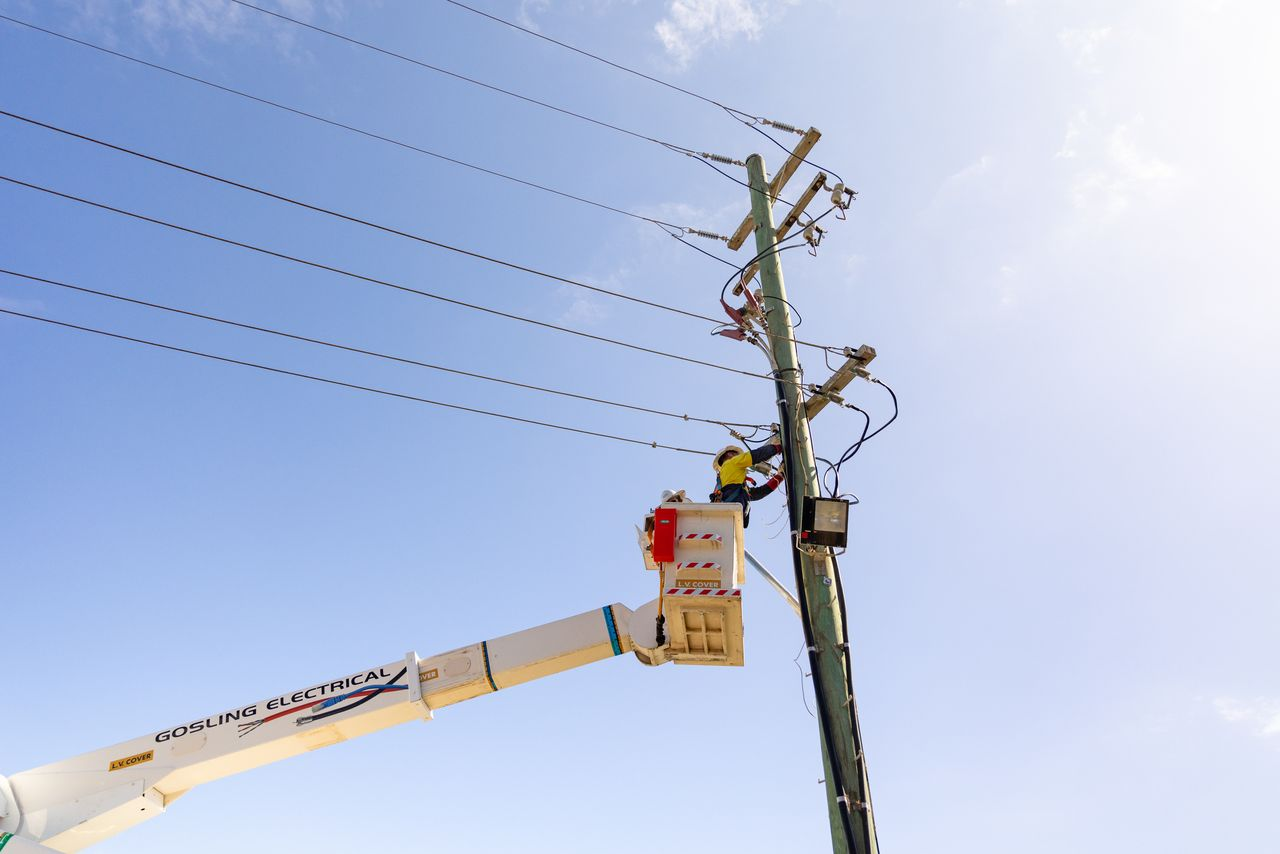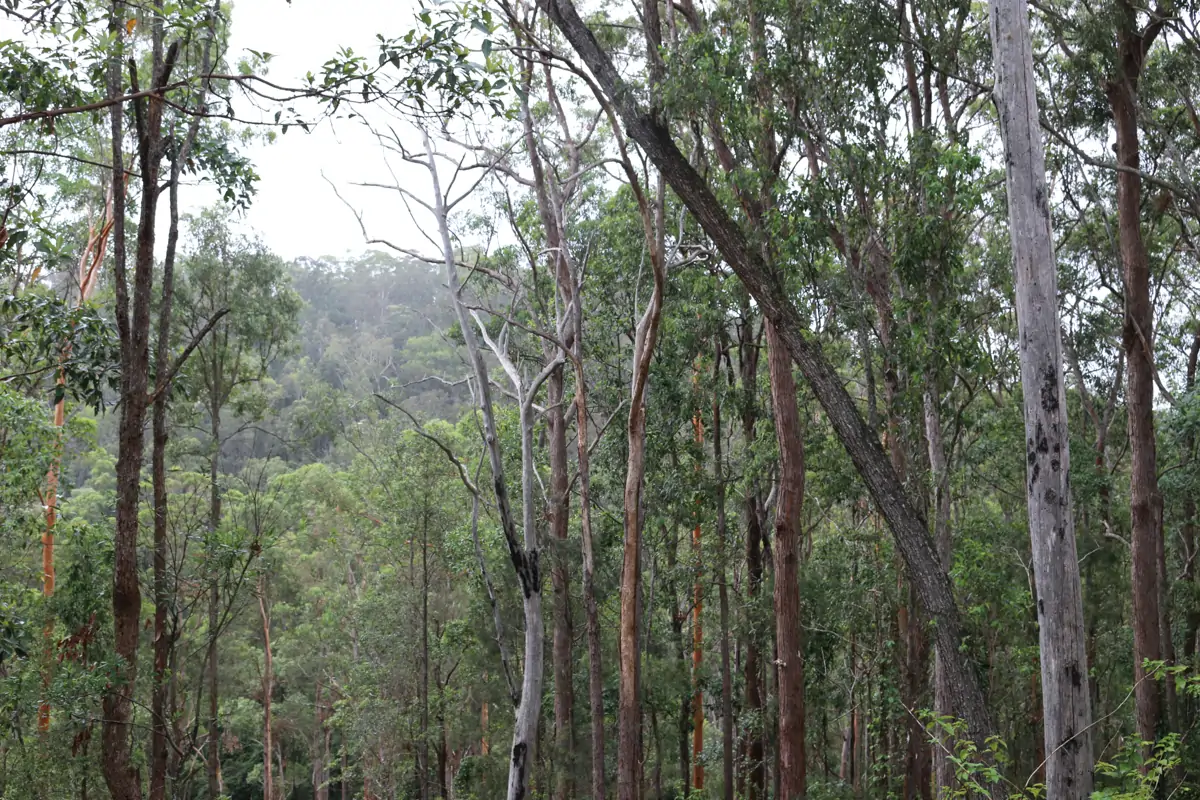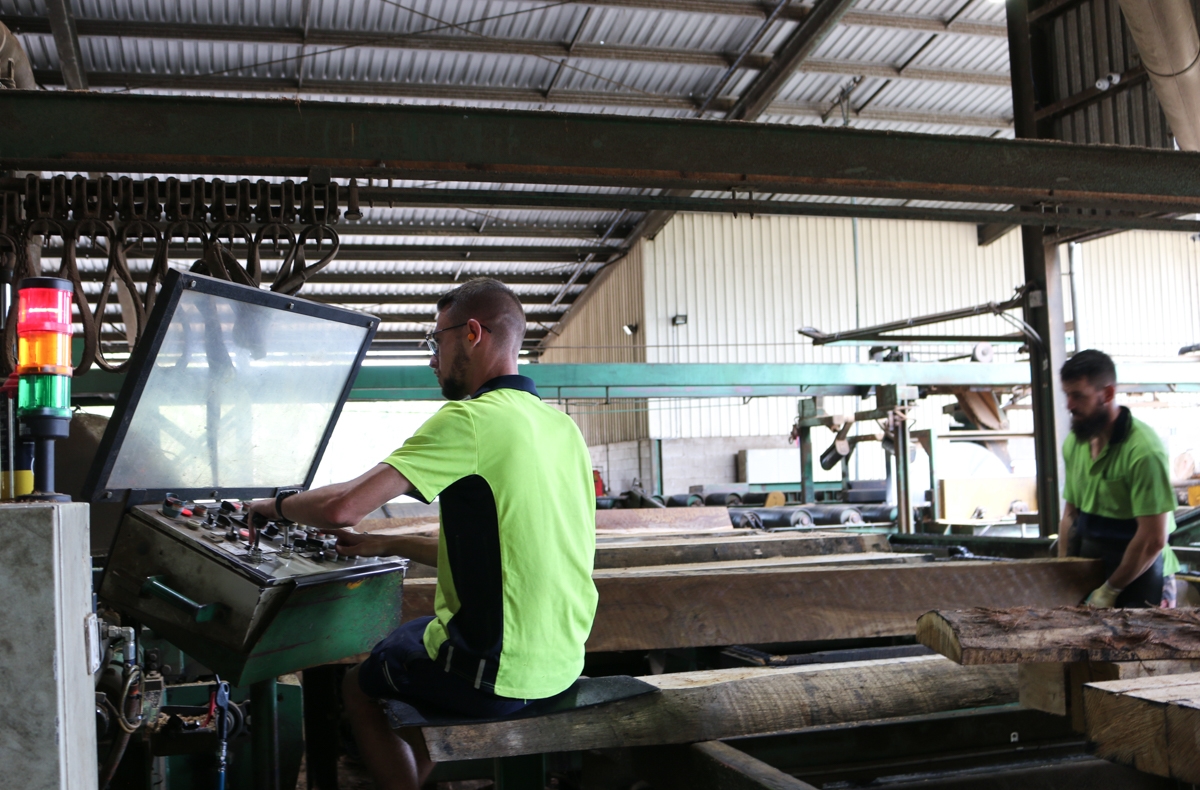Telegraph poles are a familiar sight across New South Wales. They stand quietly alongside roads, across paddocks, and on suburban streets, carrying power, phone, and internet services that keep communities connected. Most of us drive past them daily without a second thought, but every pole has a life story that begins far from the roadside within a sustainably managed forest.
In NSW, the journey of many telegraph poles begins in a sustainably managed forest, where selective harvesting and careful planning protect biodiversity and ensure the forest continues to thrive. From there, the timber is transported to specialised primary processing facilities such as Koppers in Grafton on the Mid North Coast, where it is treated to withstand decades of service in Australia’s harsh conditions. Once ready, these poles are installed across the state, delivering essential infrastructure to homes, businesses, and farms.
It’s a story that blends sustainable forestry, precision engineering, and a rich history. A journey from forest to footpath that has supported NSW’s infrastructure for over 160 years. This is how a telegraph pole is created, and why sustainable forest management is the key to keeping them standing tall for generations.
Step 1: Sustainable forestry: timber selection for telegraph poles
The timber used for telegraph poles in NSW comes from forests managed under some of the strictest environmental standards in the world. In private native forestry, every harvest is governed by regulations designed to protect biodiversity, soil health, water quality, and the long-term productivity of the land.
At Sustainable Forest Management, we work closely with landholders to ensure each harvest is carried out selectively. This means only certain trees are removed based on their species, size, straightness, and suitability for the intended use such as telegraph poles.
Species are chosen for their straightness, exceptional durability and strength. In NSW, the most commonly used species are:
- Spotted Gum (Corymbia Maculata): tall, very strong, dense and durable.
- Ironbark (Eucalyptus Sideroxylon): renowned for its hardness and termite resistance.
- Coastal Blackbutt (Eucalyptus Pilularis): chosen for its structural strength and versatility.
These native hardwoods can withstand Australia’s harsh conditions, from blazing summer heat to torrential coastal storms. Naturally suited to Australia’s climate they are a sustainable choice when sourced responsibly. Selective harvesting ensures forests continue to regenerate, providing a renewable supply of high-quality poles.
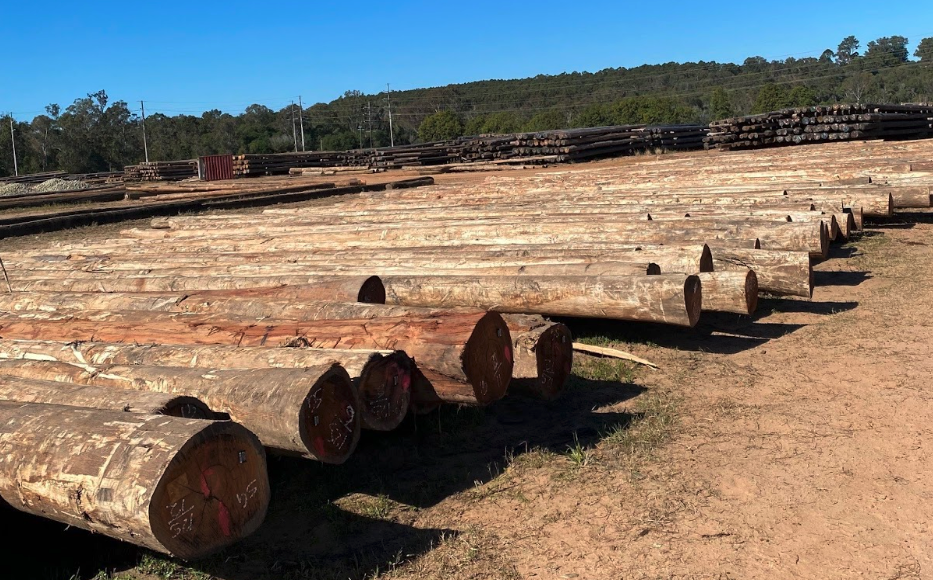
Step 2: From tree to pole at Koppers Grafton
Once harvested, the trees destined to become hardwood telegraph poles are transported to Koppers Grafton, a leading timber treatment and processing facility in New South Wales.
Koppers have been an integral part of the supply chain for decades, specialising in the production of utility poles, piling, and other structural timbers. By working with sustainably sourced timber, they help ensure that critical infrastructure is built on environmentally responsible foundations.
On arrival at Koppers, each pole is:
- Inspected to Australian standards for Hardwood Utility Poles, ensuring they meet strict quality standards for size, straightness, and structural integrity.
- Receipted into yard following strict Chain of Custody controls and stacked away, allowing seasoning to occur, removing moisture from the timber.
- Fabricated into final form, gang nailed and capped (to protect against end splitting ) and treated using preservatives designed to protect against termites, fungal decay, and weathering.
The treatment process is vital. Without it, even the toughest hardwood will eventually break down. By applying advanced preservation techniques, Koppers ensures that each pole can perform safely for decades, even in coastal or flood-prone areas.
Standard hardwood telegraph poles in NSW typically range from 9 to 12 metres in length, although shorter and longer poles are used depending on network design. Larger poles of up to 15 metres may be used for special applications or in high-clearance zones (Ausgrid).
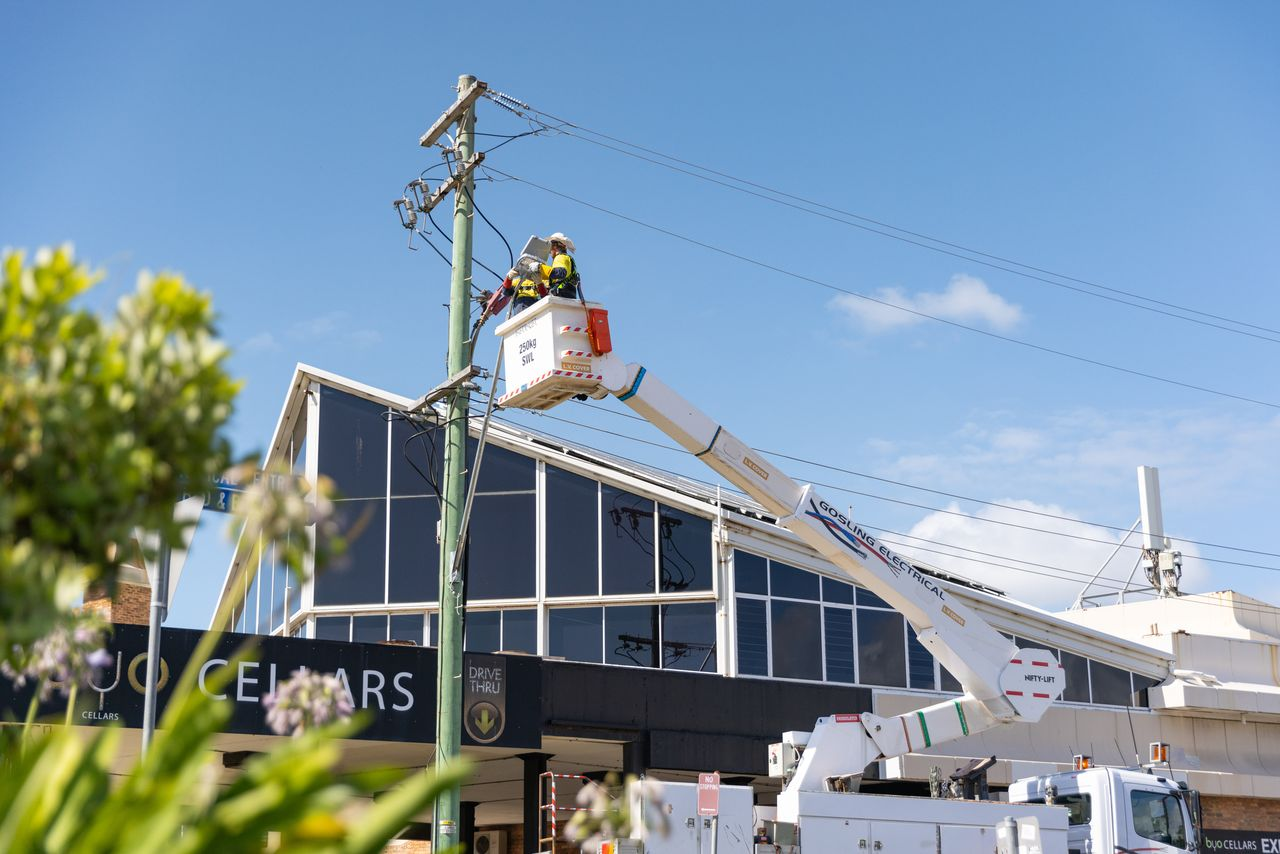
Step 3: Distribution and installation across NSW
Once processed, the poles are distributed to electricity network operators, telecommunications companies, and contractors throughout NSW. Whether they’re destined for a rural back road, a busy urban street, or a new housing estate, installation is a precise process.
Poles are set into the ground at a depth that ensures stability, often with around 6ft of their length below ground. This depth, combined with the natural strength of hardwood and the protection from treatment, enables poles to withstand extreme wind, floods and the weight of cables and transformers, and decades of exposure.
Engineers and planners also consider safety clearances, visibility for road users, and access for maintenance crews before installation. Every pole placement is part of a broader network design, ensuring that electricity and communication services reach where they’re needed most.

Step 4: The expected lifespan of a hardwood telegraph pole
A well-made hardwood telegraph pole has an impressive lifespan of approximately 30 to 40 years, sometimes more. Over those decades, poles endure intense sun, driving rain, high winds, among other stresses.
Regular inspections, including visual checks and structural testing, ensure poles remain safe throughout their service life.
When poles do eventually reach the end of their service life, they are removed and often repurposed. Many old poles are repurposed for farm fencing, retaining walls, landscaping projects, or even transformed into playground structures. Recycling poles reduces waste and extends the benefits of the original timber harvest.
Closing the Loop – Sustainability in action
From the forests where they grow to the streets where they stand, telegraph poles in NSW tell a story of connection. From the first telegraph line between Sydney and Liverpool in 1858 until now, hardwood telegraph poles have stood the test of time. Despite technological advancements they remain a preferred solution for utility poles. They are a practical product of sustainable forest management, skilled processing at Koppers Grafton, and careful installation by network crews.
By sourcing poles from responsibly managed private native forests, NSW not only maintains a renewable supply of high-quality hardwood but also supports regional jobs, preserves wildlife habitat, and keeps infrastructure costs sustainable.
The next time you see a telegraph pole along your road, remember it’s more than a piece of timber holding up wires. It’s a carefully planned part of a sustainable cycle that links our forests to the services we rely on every day. A product of sustainable forest management, skilled craftsmanship, and a commitment to connecting communities across New South Wales.
Want to see your timber turned into a telegraph pole?
At Sustainable Forest Management, we work with landowners to harvest high-quality hardwood through sustainable practices ensuring your timber can go on to serve communities for decades as a utility pole. From forest planning to selective harvesting, we make sure your land stays productive, your forest regenerates naturally, and valuable habitat is preserved.
Book your FREE forest assessment today – call Siman and the team on 1300 367 378
Download your copy of the Ultimate Private Native Forestry Guide for Landowners
Read more on our Blog: How to get the best return from my private native forest
